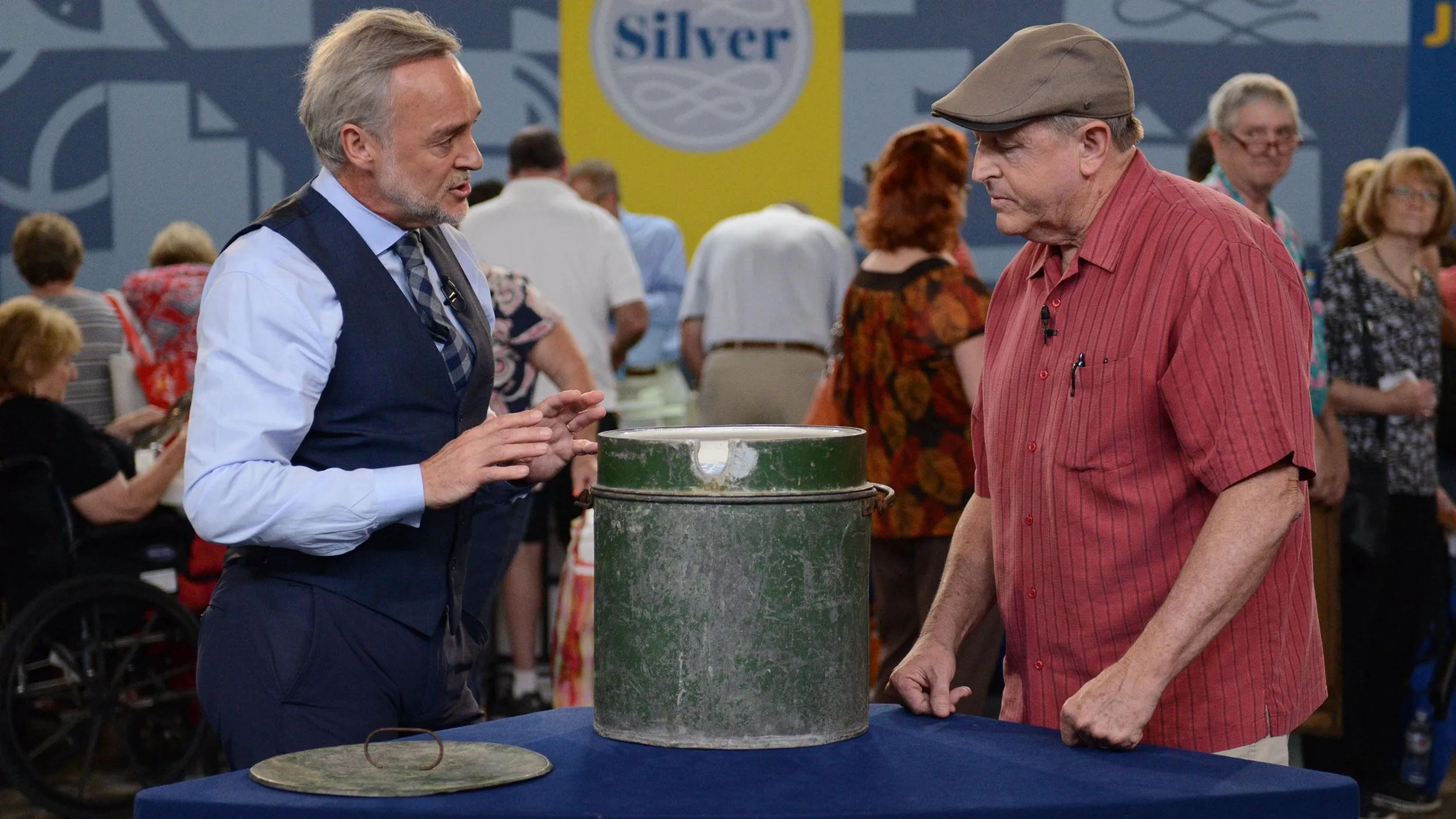APPRAISER: Where did you get it?
GUEST: Last year from a Dallas estate sale.
APPRAISER: And what did you pay?
GUEST: $25.
APPRAISER: All right, now, what do you think this is?
GUEST: I've read Chinese furniture books, so I know this is kind of a stool.
APPRAISER: This is a stool, and it would have been made in a set. Now, what's unusual about this stool is the shape, and this is a very specific shape called a drum stool, because it is based on an ancient Chinese drum. We know that by this kind of squat form.
GUEST: Lower, yes.
APPRAISER: Low form. And importantly, these little bosses going around the edge, do you know what those are?
GUEST: Looks like buttons to me.
APPRAISER: Well, they're not buttons. They're actually representing brass or bronze tacks that were hammered into the surface, securing a leather surface to the top in the original drum design that goes way back-- way, way back. It's an ancient shape. This is a type of Asian hardwood that's called hongmu. So the other thing that's a major feature that helps us to understand more about this is the way that this is joined together, because Chinese furniture has a very interesting set of joinery techniques. And I want you to look right here at the base. You'll see protruding are these pegs, there and there. And they're around every leg, and there'll be a peg underneath, and there are pegs on the interior that are securing the joints. And the fact that these pegs protrude are indicative that the wood has shrunk and the pegs are being pushed out from the surface. And that is indicative of something that is of great age that was likely made in the early 18th century in this kind of very elegant design. Complicated to make, it required great skill of a very talented craftsman. I think this, at auction, realistically, would sell in the $5,000 to $8,000 range.
GUEST: That's great. But I'm going to keep it.
(both laughing)



